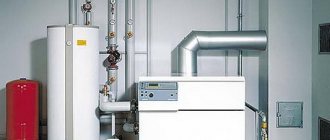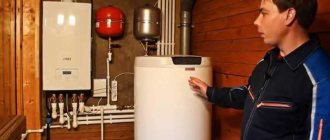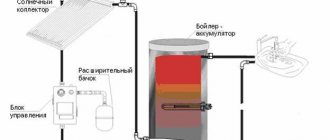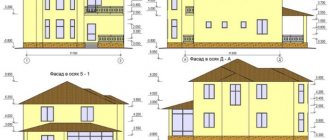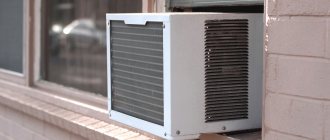| Place | Name | Characteristics in the rating |
| The quietest diesel generators |
| 1 | Fubag DS 3600 | Best price for a diesel unit |
| 2 | Pramac P 4500 | The most reliable generator. Low volume operation |
| 3 | Geko 7801 E-AA/ZEDA | Diesel generator for domestic use |
| 4 | ENERGO ED 8/230 H | Powerful, high quality device |
| 5 | TCC SDG-7000 EH3 | Three-phase generator 380 volts |
| The quietest gasoline generators |
| 1 | Honda EU10i | The best low noise gas generator. The quietest |
| 2 | Fubag TI 800 | Long battery life |
| 3 | Huter HT950A | Most popular manufacturer |
| 4 | PATRIOT GP 1000i | The best ratio of price and quality |
| 5 | ELITECH BIG 1000R | Large fuel tank capacity |
The quietest diesel generators
A diesel generator is rarely used for domestic purposes. Among them there are no compact installations that produce only a kilowatt. As a rule, these are powerful machines, where the minimum threshold is 3 kW. At the very least, two. A diesel engine is considered more economical, practical and durable. All other characteristics being equal, it is capable of delivering much more energy compared to its gasoline counterpart. But its sound level will be higher. The lowest noise models have a value in the region of 70-80 units. Well, a silent generator is still fantastic.
Principle of operation
An electric generator is a device for generating electricity. It can be used to power electrical devices.
- An electric generator can power devices in a private home during a power outage.
- However, it can also be successfully used where it will be an independent source of electricity.
- Such places would be, for example, a garage, workshop, garden or construction site.
The quietest gasoline generators
In most cases, a gas generator operates quieter than its diesel counterpart, but even here the noise level does not fall below 55 dB. And then, only inverter installations, which are initially quieter, have this indicator. The inverter housing contributes to this. Completely closed, it partially conceals the sounds produced, although the exhaust noise cannot be removed anywhere, and it is this that is the main source of sound. In our rating we will consider devices with a power of up to 3 kW, but the quietest ones have a value of 1 kW and lower.
Single and three phase units
Single-phase generators require a voltage of 1~230V. These are low power devices. They are primarily suitable for household appliances. In turn, three-phase generators 3~400V are suitable for high-power equipment. These are mainly electric heating, hydrophore installations, water heaters, and so on.
- Before choosing a generator, it is also good to check what type of electricity the power comes from.
- There is also a more universal device - a three-phase generator, which also allows you to connect single-phase devices (it has 2 sets of sockets).
- However, such a unit should be used according to certain rules. The current power consumed from single-phase sockets cannot exceed 60% of the power of the entire generator.
- You should also ensure that when simultaneously supplying single-phase and three-phase loads, the phases are loaded more or less evenly.
The more powerful the generator, the more appliances you can power from it at the same time, but also the more money and space you will have to spend on it. Some models are very large. This is especially noticeable in the photo of a generator for the home.
Review of popular models
Today, the market offers a wide range of gas generators with a rated power of 1 kW of domestic and foreign production. Their comparative characteristics are presented in the table.
| Model name | power, kWt | Weight, kg | Fuel consumption at 75% load (liters per hour) | Battery life on 1 tank of fuel (hour) | price, rub. | Number of sockets | Startup type |
| Fubag BS 1000i (single-phase) | 0,8 | 8,5 | 0,6 | 3 | 9 740 | 1 (at 220 V) | manual |
| Honda EU 10 i (single phase) | 0,9 | 13 | 0,7 | 3 | 56 900 | 1 (at 220 V) | manual |
| Kipor IG1000S (single phase) | 0,9 | 15,5 | 0,7 | 5 | 25 488 | 1 (at 220 V) | manual |
| EuroPower EPSi 1000 (single phase) | 0,9 | 14 | 0,5 | 8 | 53 991 | 1 (at 220 V) | manual |
Gasoline generators, due to their compact size and light weight, are characterized by mobility (they are easy to carry even in a backpack), do not take up much space, are unpretentious to operating conditions (can operate in the cold at -20 degrees Celsius), do not emit much noise (average frequency - up to 50 Hz). They generate high-quality current, so electronics (smartphones, laptops, medical equipment) are connected to them.
Reputable companies (Kipor, Honda, Fubag, EuroPower, Geko, Elemax, Mosa, Vepr, Gesan, AMG, Pramac, Atlas Copco, GMGen, Energo, Leega, SDMO, Endress, Mitsui Power, Hyundai, etc.) provide a guarantee for manufactured units. In addition, the technical characteristics of mini-power plants are confirmed by certificates of compliance with current safety standards.
Features of connecting to power line networks
It is now difficult to imagine comfortable housing without electricity. Thanks to it, the home is illuminated, heated, food is cooked, and water is heated. It’s just not always possible to provide electricity to your home, especially if the house is located far from the city.
Many owners of country houses and summer cottages, especially if they are located far from civilization, have to resolve the issue of energy supply at home.
The most common solution is to connect the house to power transmission lines, but they are not available everywhere or the nearest line is located at a considerable distance from the house.
In this case, providing electricity to your home can be very expensive. After all, you will have to coordinate issues on the supply of this energy source with the relevant authorities, pay for the installation of a substation and power line supports for connecting to the house.
And what’s especially unpleasant is that the equipment purchased, and at a considerable cost (substation, wires, supports), will be transferred to the balance of local energy networks, that is, they will be the owner of everything, and the owner of the house will also have to pay for the supply of electricity.
Therefore, for many, this option may become impractical, quite troublesome and expensive.
The quieter the better
Which generator is best for home? There is no clear answer to this question. But another important parameter when choosing a device is the level of noise it creates, which is indicated in the specification.
If the generator is located outside the building, then the volume can still be tolerated.
- The situation is different, for example, in a garage. Unfortunately, most generators available on the market make a lot of noise, reaching levels of 90-98 dB during operation.
- For comparison, a passing motorcycle produces 95 dB.
- However, there are models of built-in units (unfortunately, correspondingly more expensive), in which the noise level is reduced to 65–75 dB (vacuum cleaner - 70 dB).
Let's start by defining goals
When choosing a generator, the first question that will need to be answered is: “What is the purpose of using it?” Such equipment can serve as the main source of energy. This is necessary if connecting to a centralized power supply network is impossible or does not make sense (for example, at a dacha, at temporary construction sites). But most often, a mini-power plant is used as a reserve in case of an emergency in the main power supply system. When choosing a generator as the main power source, the basis will be such characteristics of the unit as its
- sufficient power,
- relatively long motor life,
- efficiency,
- reliability,
- the presence of an extensive service network,
- compactness and weight (if frequent transportation is necessary),
- ease of use.
In this case, convenience is no less important than, for example, the reliability of the equipment. Few people would like to run to the generator every 3-4 hours around the clock to top up fuel or repair it after six months, leaving the house without electricity. As for efficiency, fuel consumption and cost always become one of the determining factors when choosing any equipment. Finally, the power of the unit must be selected so that consumers do not think about what is currently plugged into the outlet and what else can be turned on without overloading the generator. Most often, a power plant is still required as a backup power source, so we will dwell in more detail on this option.
Briefly about the main thing
An autonomous electricity generator consists of a frame, an internal combustion engine and an alternator. The principle of its operation is based on the conversion of mechanical energy from a piston fuel engine through a rotor-stator generator into electric current. The power plant is used for backup or permanent power supply to a home or construction site.
There are the following types of generator:
- Gasoline.
- Diesel.
- Gas.
- Combined.
- Inverter.
- Synchronous and asynchronous.
- 2- and 4-stroke.
- On a liquid or air cooling system.
When choosing a station, it is necessary to take into account power, operating voltage, current purity, operating time, noise, service life, type of fuel, type of alternator, fuel tank volume and starting mode. When calculating power, it is necessary to take into account the starting currents of devices. Installation, installation and first start-up are best left to specialists.
Ratings 0
Determining the Best Energy Source
Choosing an alternative energy source for autonomous power supply to a residential building is a very important and responsible moment that requires a serious approach.
The most popular and most common options include:
- generators running on diesel fuel or gasoline;
- solar panels;
- batteries of large volume and power;
- hydroelectric systems;
- wind energy converters.
Each source has its own unique characteristics and features. Owners should familiarize themselves with them in advance and, based on this information, determine the best option for a system that can satisfy all the electrical needs of a private residential building.
Fuel consumption
An equally important factor is gasoline consumption, for example, the Chinese Matrix and the Russian-made Vepr with a power of 3 kW consume about 1.5 liters of fuel per hour. Japanese products from Hitachi and Mitsui Power ECO, as well as from the Korean company Hyundai, with the same power of 3 kilowatts consume about 1.2 liters of gasoline per hour.
It should be noted that there are generators that use gas as fuel; such systems are somewhat more expensive than similar gasoline devices. But if we take into account the difference in the cost of gas and gasoline, then the purchase of such a station will be justified.
Number of connected devices
In order for the energy generator to fulfill its task, its power must be greater than the total power of the devices that will be connected to it.
Rated (not maximum) power is important, especially when it is necessary to power devices with asynchronous motors that require high current, such as pumps or hydrophores.
- When determining the power of an electric generator for a home, you should add up the power of all the devices that you plan to power.
- It should be 70-80% of the generator power. However, this indicator may vary depending on the generator itself and the connected devices.
- It is worth studying this topic in more detail before purchasing.
- Typically, 1.2 kW is added to the power consumption of each device. The power reserve should be 20-30%.
- Otherwise, the power consumption may be too high and you will have to turn off several devices.
It is better not to connect single-phase and three-phase devices to a three-phase generator at the same time.
Also, if necessary, you can buy a generator for your home with automatic start.
Startup procedure
It is important not only to know which gas generator to choose for your home, but also how to use it correctly after purchase. The startup procedure is carried out according to the following algorithm:
- The unit is checked for the integrity of all components and installed according to the instructions outdoors or indoors.
- Grounding is checked/installed.
- The fuel tank and oil are refilled, and the gas line is connected.
- All electrical appliances are disconnected from the network.
- The valve from the fuel line is moved to the open position.
- The engine is being started for the first time.
- After a few seconds, the unit turns off and then starts again for optimal warming up.
- Next, the device is put into permanent operation.
- The output current parameters are checked.
- Electrical appliances are connected to the generator network.
Installation, settings, testing, grounding and test run are best left to a specialist.
Wind energy for autonomous power supply
In the case where meteorological or any other objective reasons do not allow the installation of solar panels or collectors, it makes sense to pay attention to the assembly and installation of a wind generator. It is a turbine placed on high (from 3 meters) towers.
It captures the kinetic energy of the vortex flow, converts it into mechanical energy by rotating the rotor, and then turns it into an electrical resource using special inverters.
The owner of a private house who has planned to install a wind generator with a power of more than 10 kW must carefully study information about changes in the direction and strength of the wind in his area over the past 20 years
Statistics can be provided by the weather service and various Internet services that allow you to monitor the weather online. If the winds in the region are considered a rare phenomenon and do not have the required strength, installing a “wind turbine” will be impractical.
Image gallery
Photo from
Wind generator in a suburban area
Wind turbine controller
Batteries for reserve charge
Inverter for converting the received current
The unit is reliable, the wind generator does not create harmful emissions into the atmosphere and does not leave production waste, but for full operation it urgently needs a constant wind blowing at a speed of at least 14 kilometers per hour. This is a very important condition, and if it is not met, the device simply will not cope with the assigned tasks.
Kinds
• Two-stroke generators are fueled with gasoline mixed with oil, which ensures that the internal parts are lubricated while driving. The need to mix fuel with oil is due to the lack of a lubrication circuit in this type of design. Carbon deposits and dirty exhaust generated during operation require frequent maintenance. Push-pull devices are low-power. During operation they make more noise than their four-stroke counterparts. Recommended application:
— for performing small amounts of work far from the power line;
Maintenance
Timely maintenance of the generator set has a noticeable impact on its service life.
The engine, as its most complex component, requires the most frequent attention. According to the frequency specified by the manufacturer, indicated in operating hours, it is necessary to change the engine oil and service the air filter. On powerful generators equipped with more complex engines, the oil and fuel filters are also changed. Gasoline and diesel engines (gas engines are much less common) require replacement of spark plugs. If the generator is used sporadically, you should not store it with fuel - oxidation and decomposition over time can lead to clogging of the carburetor with deposits on gasoline generators and the deposition of paraffin on diesel engines, which can completely block the flow of fuel. Also, old fuel will make starting difficult.
The generator itself is an almost eternal unit; only from time to time it is necessary to clean the brush assembly of the synchronous generator from dust and change the brushes themselves, and sometimes the rotor bearings.
Source: https://generatorexperts.ru
Advice on choosing a manufacturer from an expert
- Everything is as usual here, the products of famous brands are distinguished by their quality, which can only be exceeded by the cost of such products. If you decide to install such a gasoline generator, then it makes sense to familiarize yourself with the rating of the best manufacturers, which lists the top 10 companies. Given modern realities, do not forget to ask the seller about the availability of a service center.
- Since a gas generator has a relatively short resource, it is better to worry about the availability of spare parts in advance, because a non-working power plant is of little use. From the same point of view, it makes sense to consider models that have a self-diagnosis system, with error codes displayed on the information display.
- Domestic military models, which are unpretentious in operation, but are distinguished by their “gluttony”, have proven themselves to be quite good.
- There are cases when counterfeit products are sold under the guise of branded products, so always check the certificate of conformity.
Ignition system
As for the launch system, it can be manual or automatic. In the first option, the installation is turned on by a manual or electric starter directly on site. In the latter case, it is possible to organize a remote start after a small modification (if this function was not provided by the manufacturer).
In the second embodiment, the generator starts working when the centralized power supply is turned off. Stations with automatic start are the most reliable option for emergency power supply for a summer house or country house.
Electric machine type
A synchronous or asynchronous electric machine can be used as a generator for an autonomous power plant. A detailed description of the design and operating principle of these installations can be found on our website.
Due to their simple design, stations with asynchronous electric machines are distinguished by their simplicity of design; accordingly, brushless generators are much cheaper and have a longer service life than synchronous installations. But, it should be taken into account that with the latter it is easier to adjust the output voltage; this is done by controlling the number of revolutions. This is why synchronous generators are more efficient when the load changes sharply. To reduce voltage “sag” in installations with asynchronous machines, their design uses systems that allow a short-term increase in power.
Solar power plant
One of the most promising areas in the development of autonomous power generation is the use of solar panels. Special semiconductor photocells are capable of converting the energy of sunlight into electricity. Each of the elements does not have particularly outstanding power output, but they are assembled into large-area panels, and a certain number of such panels are already capable of providing energy to a household.
Solar panels on the roof of a house
What can be said about the advantages of such a system:
- The equipment does not require fuel - only solar energy is used to generate electricity.
- The absence of any complex mechanical kinematic components makes such power plants very reliable and durable. Their service life is calculated in decades.
- Solar power plants do not require complex maintenance work - it is enough to keep the working surface of the panels clean.
- If generators that convert kinetic energy (rotation) into electrical energy have a certain finite value of their power, then the solar power plant, if necessary and if there is enough space, can be expanded with an additional number of panels. That is, the system turns out to be more flexible and has wide potential for further development.
- The solar power plant is completely silent and has no restrictions on the installation location. More precisely, any unshaded area can be suitable for installing panels, both on the roof of a house and outbuildings, and in the local area
Now a few words about the disadvantages :
- It is quite obvious that the operation of such a station has a pronounced cyclic nature - no energy is generated during the dark hours of the day. In addition, there is a very high dependence on the length of daylight hours and weather conditions. The panels require direct sunlight to operate at full efficiency. In cloudy weather, production drops sharply.
- A significant drawback is the high cost of the panels themselves. Even without taking into account installation work and the acquisition of all the equipment necessary to organize a full-fledged power plant. So, one watt of generated energy will require the panels themselves to cost comparable to $1.5. It’s easy to calculate how much it will cost to purchase photovoltaic cells for, say, a solar system with an output of 1 kW or more - this scares many people right away.
- Solar panels produce electricity at low voltage levels and need to be brought up to consumption standards.
Due to the last point, as well as due to the instability of the output power, the solar power plant is organized on the principle of accumulation and further conversion of the generated energy. The diagram roughly looks like this:
Approximate diagram of a home solar power plant
Electricity generation occurs in the required number of solar panels installed (item 1). A special device, the system controller (item 2), directs the generated potential to charge the batteries (item 3). When the load is turned on, a direct electric current of 12 or 24 V enters the inverter (position 4), where it is converted into an alternating current of 220 V/50 Hz, and in this form is transmitted to the points of consumption (position 5).
The diagram, of course, is given with great simplification. So, it shows one battery, but in reality it is usually a whole battery of several energy storage devices with a very high capacity.
Several high-capacity batteries combined into one battery.
Often, a low-voltage line is taken directly from the batteries (more precisely, from the controller), bypassing the inverter. You can connect to it a home lighting system equipped, for example, with LED lamps that require a voltage of only 12 volts.
The output power of the inverter can be calculated according to the same principle as the power of the generator, using the same calculator. But this, as they say, is momentary power, showing the possibility of simultaneously connecting one or another load. But the calculation of the number of solar panels themselves and the storage unit should still be entrusted to specialists. There are many subtleties here that are difficult for an inexperienced person in these matters.
The calculation system is based on the fact that all energy consumption points (lighting, household appliances, etc.) are carefully calculated, taking into account their power and the average operating time for a certain period (say, a day). After summation, the result is expressed in kilowatt-hours (kWh) - this amount of energy must be provided daily for full, stable operation of all electrical equipment at home.
Based on this indicator and the voltage of the batteries, their required total capacity, expressed in ampere-hours (Ah), is calculated. In this case, both the operational reserve and a certain level are taken into account, below which it is not recommended to discharge the battery (say, 25÷30% of the full charge). Accordingly, the required number of batteries is selected based on the total indicator, from which the total battery is assembled.
Finally, the number of solar panels of a certain power is calculated, which will be able to systematically replenish the battery charge. In this case, many factors are taken into account - in addition to the characteristics of the panels themselves, the geographic latitude of the region, the length of daylight hours, climatic features, the specific location of the panels, and more are taken into account. The end result should be the optimal number of panels.
It is, of course, also possible to carry out such calculations on your own, but there is a high probability of making a mistake, simply due to an incorrect assessment of the initial data. However, as already mentioned, the system is highly flexible, and if necessary (or if material opportunity arises), it can be expanded.
A well-planned and well-installed system is quite capable of becoming the main source of electricity for a country house. But if it is used “in its pure form,” then there is always the possibility of being left without electricity due to unforeseen external circumstances - prolonged bad weather, when, with normal consumption, the energy flow becomes minimal, which leads to battery discharge.
You should be prepared that the initial costs will be very impressive, and it is somewhat naive to build hopes for a too quick return on investment.
Video: Example of a 6 kW home solar power plant
Frequently asked questions from readers
There is a single-phase gasoline generator Fubag BS 6600 A ES 6 kW. There are 3 phases coming into the house. Will this generator work with a 3-phase automation unit Startmaster BS 6600 D 400V for gasoline stations BS 6600 DA ES FUBAG 838221 if jumpers are placed on the generator input connection bus in the automation unit? Will it be possible to deceive the 3-phase automation by connecting a single-phase generator to it?
No, the Fubag BS 6600 A ES single-phase gasoline generator can work with the Startmaster BS 6600 230V single-phase automation unit. The design of the latter allows you to connect a single-phase generator to a single-phase electrical system. In this case, the automation unit functions as follows:
— In automatic mode, it continuously monitors the presence of voltage in the main source - the external distribution network. If a potential difference is present, this will be indicated by the control lamp.
— When the Startmaster BS 6600 automation unit detects a lack of voltage in the electrical circuit, it sends a control signal to start the gasoline generator.
— If the gasoline generator starts successfully, the operation control lamp lights up and indicates the supply of voltage from an independent source. The Startmaster BS 6600 automation unit constantly monitors the presence of supply voltage at the output and checks the resumption of power from the “central network”.
— After the supply voltage is restored, a control pulse is received in the electrical circuit to turn off the generator. Which is taken out of operation and disconnected from the electrical circuit.
If we consider this process in the format you described, then the Startmaster BS 6600 D automation unit for a three-phase electrical system will not be able to control the presence of three-phase voltage at the output from a single-phase generator. Therefore, it will turn off the Fubag BS 6600 A ES due to non-compliance with the three-phase mode, and shorting the terminals will not help in this situation.
